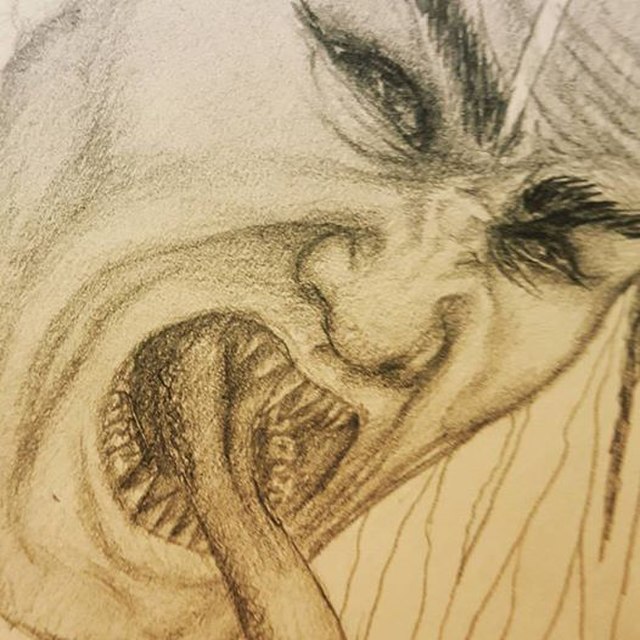
An artist’s illustration of the aswang. | Wikicommons File from H.M.Bec, CC BY-SA 4.0
CEBU CITY, Philippines — You don’t need to elaborate what the phrase ‘di ingon nato’ means to any Cebuano-speaking individual.
In its literal sense, it meant ‘others who are not like us’ in English. ‘Di ingon nato’ often collectively refers to the characters and creatures that form part of Philippine mythology.
They can be the powerful and attractive deities that rule a magical kingdom or the mischievous creatures who like to prank a lost hiker in the woods.
‘Di ingon nato’ also includes the terrifying mythical creatures whom we learned about through stories from our relatives and even friends, especially during spooky seasons like Kalag-Kalag.
Although some of them may appear similar, stories and the names of these creatures vary in different regions.
Here in the Visayas, we also have our own share of mythical beings that can make our hair rise when we get to know them.
Aswang
Aswang is often compared to the vampires of the West as they are said to feed on blood to survive. Aswangs are also shapeshifters. Here in Cebu, they are said to be notorious for eating the fetuses out of pregnant women’s wombs. In some stories, they also have the ability to fly off into the night with their huge wings, and tear their body into half — with the lower torso left behind.
Sigbin
Perhaps one of the most popular and intriguing mythological creatures in the Visayas and Mindanao region is the sigbin. While the internet has sparse information about the sigbin, it is said that their origins can be traced back to ancient Warays. They can either bring good or bad luck — depending on the treatment they receive from those who catch them. Like aswangs, these bloodthirsty creatures come out at night to suck the blood out of their victims stealthily. Legends describe the sigbin as a cross-breed between a dog, goat and a kangaroo. It walks on its hind legs, and has huge ears. They also thrive in squash fields.
Agta
Tibet has the Yeti, and the Americas have Bigfoot. Here in the Philippines, we have the Agta or also known as kapre in other regions. Agtas are huge and hairy tree-dwellers, with a dark complexion. They are also said to live near cliffs or abandoned houses. These creatures may sound intimidating due to their size but according to legend, they often do no harm to the humans they encounter.
Duwende
Duwende is the Filipino term for dwarves. Like their Western cousins, duwendes can be mischievous. Do not let their size fool you as they are often considered the wisest among mythical creatures. They also have powers that can make any person’s life a living hell. Our elders often tell us to always say ‘tabi po’ when walking through mounds of earth, or in a secluded part of the forest and mountains where they live.
When irked, duwendes apparently can inflict harm — or worse, death — to those who do them wrong. Others can be appeased, and even bring abundance, when befriended. There have been stories of families around the country, offering food and portions of their harvest to these creatures in exchange for prosperity.
Bungisngis
The Philippine folklore’s version of the cyclops are called bungisngis. Stories of the bungisngis have also been recorded in Bataan, Meluz, and Orion. The name of the one-eyed giant derives from the Cebuano term ‘ngisngis’ which means to laugh a lot. True enough, as this particular cyclops is often characterized to have a wide, toothy grin. Similar to the Agtas, they are huge creatures with supernatural strength. But according to legends, they are not the brightest as they can be easily outwitted.
Tambaluslos
Another mythical creature that apparently likes to laugh a lot is the tambaluslos. Stories about the tambaluslos are told in Cebu, Bicol, and Mindanao. They are said to be tall, humanoid creatures with an overly freakish grin from their big, ape-like protruding lips. Their mane runs all the way from their head to their buttocks. Instead of feet, they have hooves and big joints. The tambaluslos is also known for its large genitals.
In Bicol, a supreme deity name Gugurang punished the tambaluslos for its promiscuity and doomed the creature for life by carrying its enormous phallus.
The name tambaluslos comes from the Cebuano slang used to mock a useless or dumb man. And be warned, especially when you find yourself in the mountains. Tambaluslos often lives in these remote areas. You’ll know they’re around when you hear their scary, evil laugh. Once you do, you’re bound to get lost.
Tambaluslos likes to trick people by confusing them or making them lose their way. You can escape by turning your clothes inside out but that too can make them laugh even harder.
Whether you have seen them for yourselves or heard stories about them, these mythical creatures, terrifying as they can be, still goes to show how Philippine mythology is full of colors and life.
Even in today’s modern era, where technological advancements are deeply embedded in our everyday lives, these folklore and tales will always have their place in nearly every Filipino setting — be it at a family dinner, drinking sessions, camping, or even during office breaks.
Sources
- A Crash Course on Philippine Lower Mythological Creatures – MYS Universe (yvettetan.com)
- TAMBALOSLOS: Does Size Really Matter? • THE ASWANG PROJECT
RELATED STORIES
KUWENTONG KULE: Beware of the Aswangs!
/dbs
